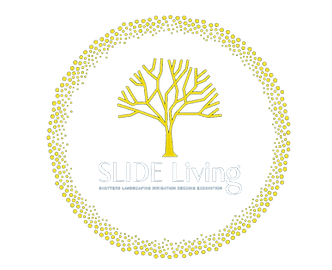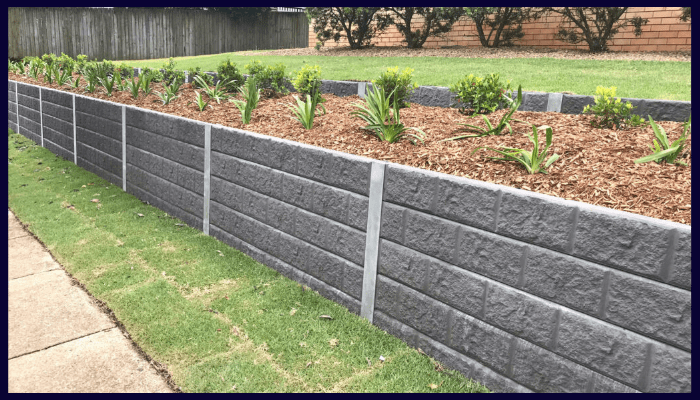Do You Need Council Approval for a Concrete Sleeper Retaining Wall in Albury?
Quick answer: council approval for concrete sleeper retaining wall Albury projects is required in most cases. Does your wall involve a vertical change?
Is it greater than 600 mm, sit within 1.0 metre of a property boundary, or land in a flood or heritage zone?
You'll need a Complying Development Certificate (CDC) or a Development Application (DA).
Below we explain when approval is needed and how the NSW planning system works.
We'll also explain what Albury Wodonga homeowners should prepare before starting their retaining wall project.
Understanding Council Approval for Concrete Sleeper Retaining Wall Albury Requirements
Why Council Approval Matters
Retaining walls aren't just pretty garden features. They're structures that hold back tonnes of soil, control water runoff and transform your outdoor space.
These walls can impact property boundaries, drainage systems, and your neighbour's land. That's why local council rules apply.
Making your wall meet the Building Code of Australia (BCA) and Albury City Council standards helps maintain your property value. It also prevents issues like disputes or structural failure later on.
The 600 Mm Threshold and What It Means
The State Environmental Planning Policy (Exempt and Complying Development Codes) 2008 applies here.
Retaining walls that cut or fill more than 600 mm above or below existing ground level typically need council approval.
Most concrete sleeper walls exceed this limit. They are designed for tough tasks: stabilizing steep slopes, holding back heavy soil, and lasting for decades.
Your average project in Albury Wodonga needs engineering certification and council consent before you start.
The 600 Mm Rule: When You Need Approval
SEPP Exempt Development Criteria
To qualify as Exempt Development, your retaining wall must tick all these boxes:
The wall's cut or fill stays under 600 mm.
It sits at least 1.0 m from all property boundaries.
It's not in a flood prone, heritage or environmentally sensitive area.
It won't redirect surface water or sediment onto your neighbour's land.
Miss just one of these conditions and you'll need to go through the CDC or DA approval process.
Common Approval Triggers
Approval becomes mandatory for walls:
Higher than 600 mm.
Closer than 1.0 m to a lot boundary.
Built near easements, watercourses or steep slopes.
Made with concrete sleepers or other structural materials needing engineering.
These conditions make sure the wall's design is structurally sound and safe for both property owners and surrounding land.
Key Compliance Factors: Height, Boundaries and Drainage
Height and Boundary Impacts
Height and boundary impacts Height triggers approval most often, but boundary distance matters just as much.
Build a retaining wall too close to the boundary line, and you could harm soil support.
This may also damage your neighbor's structures. Councils want setback compliance and often a site plan from a structural engineer before they'll give you the green light.
Drainage and Erosion Control
Drainage systems aren't optional extras when it comes to preventing water buildup, erosion, and wall failure.
Proper drainage with gravel backfill, pipes and weep holes isn't just smart building practice; it's what council demands.
Skimp on drainage and you'll either lose your exempt status or watch your wall fail over time.
Structural Standards
Walls exceeding thresholds must comply with AS 4678 (Earth Retaining Structures) and the BCA.
These standards include design life, footing depths, and material strength. They ensure your wall remains safe and functional for many years.
Material Considerations: Why Concrete Sleepers Often Need Approval
Concrete sleepers are everywhere in Albury. That's because they last forever! Termites can't touch them, and they handle our reactive clay soil conditions brilliantly especially when compared to timber alternatives.
When it comes to sleeper retaining walls vs timber, concrete options outperform in strength, lifespan, and maintenance.
But here's the thing: their strength means they rarely qualify as "minor works" under council exemptions. By nature, concrete sleeper walls are engineered structures.
They're not garden features, which is why they almost always require approval and certification.
Choosing this material also impacts property value. A well-built concrete sleeper wall enhances your outdoor space and stability.
Modern concrete sleeper retaining wall designs combine strength with a clean, architectural look that suits both new builds and traditional homes across Albury.
Engineering and Structural Certification
When to Engage an Engineer
If your wall goes over 600 mm, sits on a slope or near a boundary, or uses concrete sleepers, you need a qualified structural engineer.
They'll create certified engineering plans. They will decide on steel post spacing, footing depth, and drainage design.
They will also ensure everything meets AS 4678 and the BCA.
Why Certification Matters
Engineering certification proves your retaining wall can manage soil pressure, water buildup, and loads in Albury's landscape.
Concrete sleeper retaining walls are ideal for Albury properties because they offer the structural strength required to meet local engineering and compliance standards. Without certification, even strong walls may be seen as non-compliant.
This can lead to hefty fines or rebuilding costs for property owners.
Mandatory Documentation
For CDC or DA submissions you'll need:
Application form via the NSW Planning Portal.
Site plan showing existing and proposed ground levels.
Certified structural drawings and calculations.
Statement of Environmental Effects (SEE) explaining drainage and sediment management.
Proof of consultation for easements or nearby services.
The Albury Approval Process Step by Step
1. Pre Application Checks:
Find underground services, easements and soil types early.
2. Prepare Documents:
Get your engineer sorted and gather all required drawings and site information.
3. Submit Online:
Lodge your CDC or DA through the NSW Planning Portal. Incomplete applications bounce back within seven days, so have everything ready.
4. After Consent:
Get a Construction Certificate (CC) and appoint a Principal Certifier (PCA) to oversee compliance during the build.
Working with a local retaining wall builder familiar with Albury City Council’s rules can speed up the process.
Cross Border Considerations: Albury vs Wodonga
If your property sits near the Albury Wodonga border, here's the key difference:
In Victoria, retaining walls under 1.0 m often don't need a building permit.
In New South Wales, walls exceeding 600 mm usually require approval.
This 400 mm difference means a wall compliant in Wodonga might be non compliant in Albury.
Always check your local council's regulations before construction to avoid costly rectifications.
Common Mistakes to Avoid
Building without checking whether approval is needed.
Ignoring setback or height limits.
Skipping engineering certification for walls over 600 mm.
Poor drainage design causing water buildup.
Failing to consult council about easements or services.
Avoiding these issues keeps your project compliant and prevents costly rework or fines.
Why Work With a Professional Retaining Wall Builder
A skilled builder makes sure your wall follows local rules. They meet safety standards and check off council and engineering needs.
Professional builders take care of the paperwork, like site plans and drainage designs. They also help you navigate the approval process for a smooth, stress-free experience.
Conclusion
For most concrete sleeper retaining walls in Albury, approval isn't optional; it's essential.
The 600 mm rule, along with boundary setbacks, drainage standards, and structural engineering, decides if your project is Exempt Development or needs formal consent. Start early.
Engage professionals. Submit complete documents through the NSW Planning Portal.
This will help ensure your retaining wall is compliant and built to last.
Frequently Asked Questions
-
Yes, if your wall exceeds 600 mm, sits near a boundary, or lies in a flood, heritage or sensitive area.
-
In NSW, the limit is 600 mm, provided all other site and drainage requirements are met.
-
Usually yes. Concrete sleeper walls are structural and often exceed the exempt thresholds.
-
Site plans
Certified engineering drawings
Drainage details
Statement of Environmental Effects
Application via the NSW Planning Portal
-
Poor drainage leads to water pressure and erosion. This can risk your exempt status and weaken structural integrity.
-
Choose a licensed and insured local expert who understands council approval for concrete sleeper retaining wall Albury requirements and can handle engineering, documentation, and compliant installation.
Greg Hair, owner of Slide Living, has over a decade of experience in delivering high-quality landscaping and outdoor living solutions across Albury-Wodonga and surrounding regions.
Known for his attention to detail and great customer care, Greg has transformed hundreds of properties, specialising in everything from fencing, decking and home irrigation.
SLIDE Living is fully licensed and insured, ensuring top-notch workmanship and customer satisfaction on every project.





